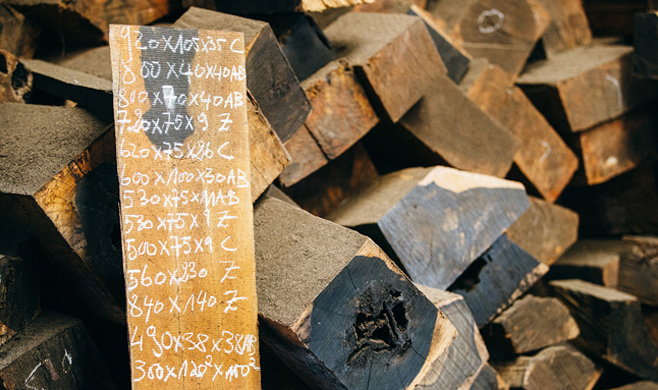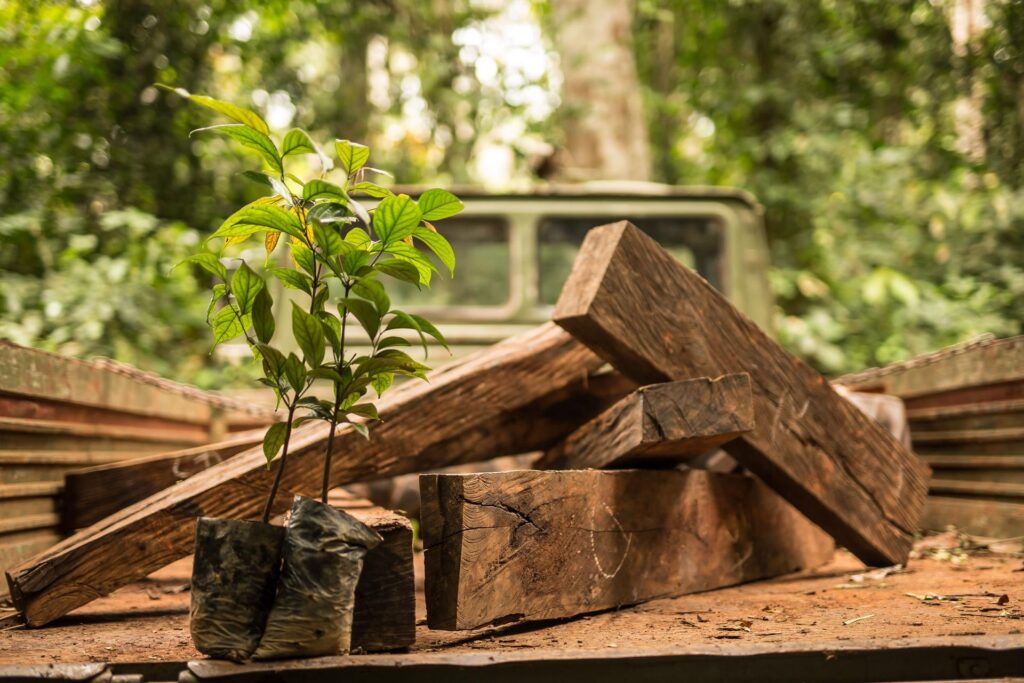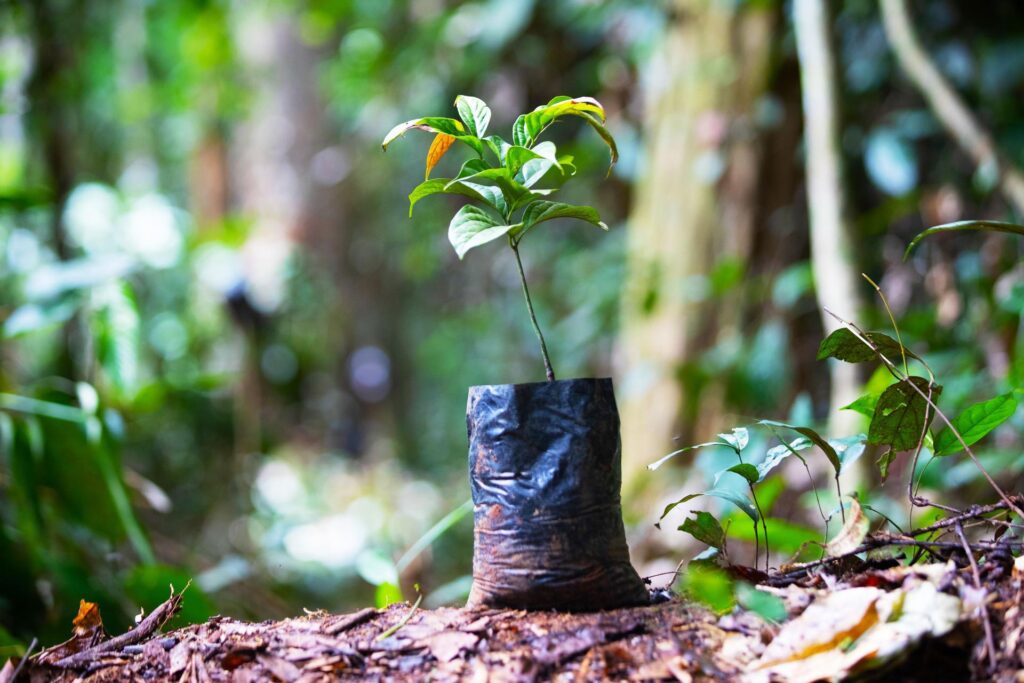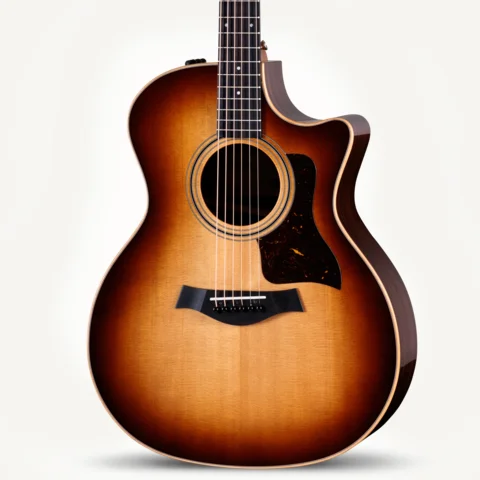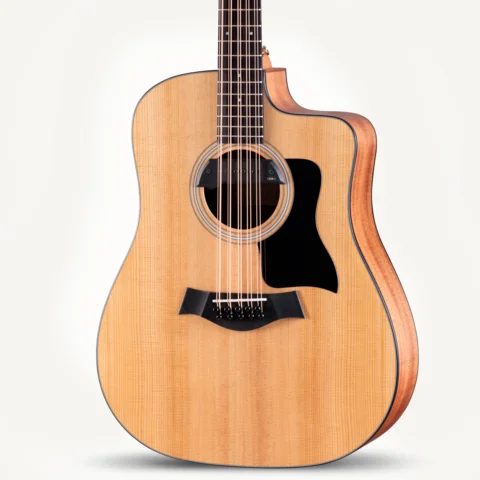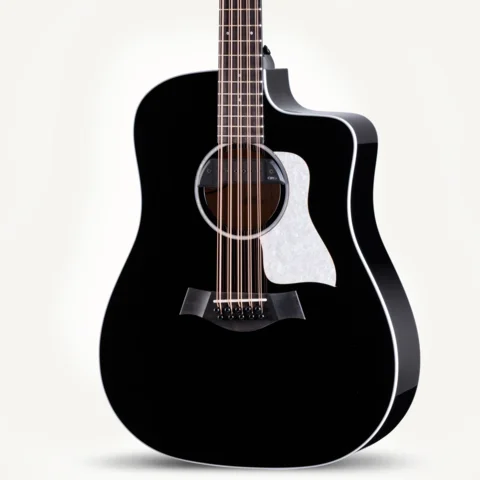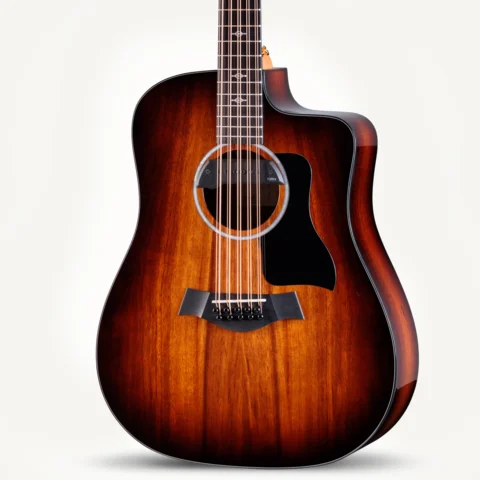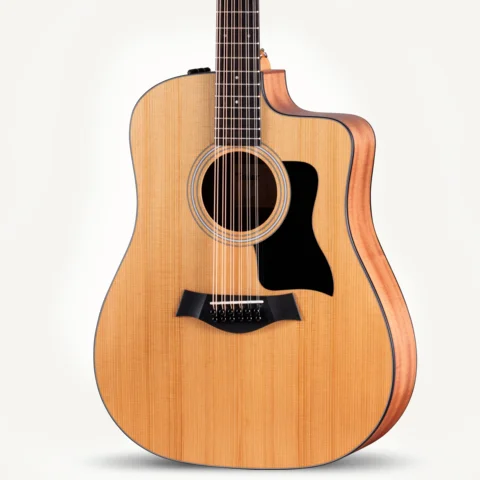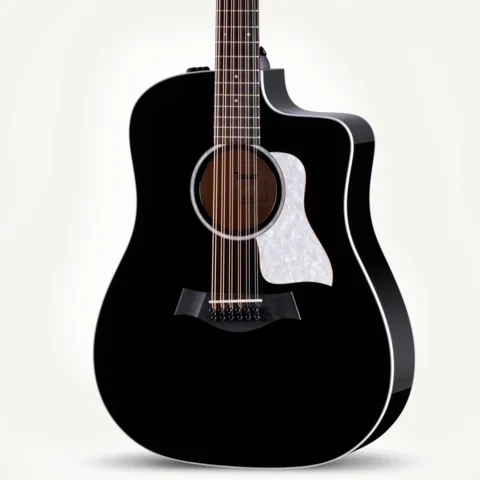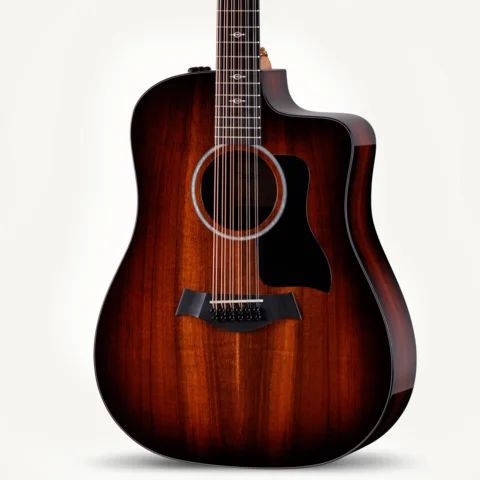Are Taylor guitars ethically made? In this article from Wood&Steel Fall 2018, Scott Paul unpacks an important question and explains what we’re doing as a company to pursue responsible sourcing and manufacturing practices.
I’m seeing more and more media coverage of corporate transparency, sustainability and ethics. I think that’s great. Here at Taylor we are increasingly asked about it partly, I believe, because we make a sexy product. People love guitars. As Bob Taylor has said: “The media wouldn’t be calling if we were making sofas.”
The other day we received another set of questions from a magazine preparing to write an article on “ethical guitars.” Such questions are familiar to me — I’ve built my career in forest policy/advocacy by asking and answering them. Over the last 25 years, I’ve worked on forest issues all over the world and examined everything from 2x4s to toilet paper, from soybeans to palm oil, and Bob’s right. There is something special about a guitar, a product made from different tree species sourced from around the world, all coming together in the form of an instrument designed to touch the soul and tell the human story.
To hold a quality guitar is really to hold something special in terms of what had to come together to make it possible. I wish more people fully understood this. What’s more, when playing guitar you can transcend politics, culture and language. Here in the U.S., I like to say that red states and blue states love the acoustic guitar equally. And abroad, I’ve seen a person who seemingly did not understand a word of English play a guitar and sing “Let It Be” with a Liverpool accent.
Anyway, the other day Bob and I were bouncing back and forth a series of emails with points we wanted to make for the “Is Your Guitar Ethical?” article. Our answers needed to be short, but this wasn’t anything out of the ordinary. The questions were familiar, and in many ways so were our answers, and yet that night I couldn’t sleep. I kept thinking about it. I had more to say. So, I’ll share it with you.
If you break it down, a typical Taylor guitar is made up of many different materials: four or more different species of woods (comprising the top, back and sides, neck, fretboard, and internal bracing, to name some key structural components); decorative elements like inlays and binding that might feature other wood species or shell materials like abalone and mother-of-pearl; some metal parts; and some glues and finishes. Let’s take a closer look at some of these ingredients.
Wood
Guitar makers use a remarkably small percentage of the wood bought and sold each year, but you might have to take my word for it. Good data for global trade in wood products is elusive, and at times what you find is questionable. I tried several times to quantify global trade in, for example, rosewood, mahogany or maple, in order to compare it to the amount of these same species purchased by musical instrument manufacturers (or just guitar makers, or just guitar makers in the U.S., or even just Taylor Guitars), but it’s virtually impossible. The best I can say, based on a consensus educated guess from a few different large and well-known manufacturers, is that guitar makers worldwide purchase less than one-tenth of one percent of the global trade in these species. A major exception to this would be ebony, a species with a radically smaller international demand. Koa, which grows only in Hawaii, would also be an exception to this rule of thumb.
Guitar makers do tend to use higher qualities of the species they select — and these are gathered from the four corners of the globe, in both temperate and tropical areas. I’ve long considered acoustic guitar makers to be the proverbial canary in a coal mine when it comes to the health of the global forest estate. We will be among the first to notice change in availability, quality and price.
If managed correctly, forests are a uniquely renewable resource, and there are many responsible forest managers out there. Unfortunately this is not always the case. Thus, the first ethical step when purchasing wood for guitar building is to ensure that it comes from a legal source. This might seem like a simple step, but for a company that buys wood from often-faraway places all over the world, I can assure you that it is not. According to the report “Transnational Crime and the Developing World” from Global Financial Integrity (GFI), a non-profit, Washington, DC-based research and advisory organization, illegal logging is the most profitable natural resource crime and accounts for 10 to 30 percent of the global trade in timber products, and 50 to 90 percent in some tropical countries. These are important numbers, especially for the 1.6 billion people around the world who directly depend on forests for their daily survival. Besides, the last decade has seen the emergence of important new laws in the U.S., European Union, Australia and Japan pertaining to the importation of illegal wood products. It’s serious business no matter how you look at it. For us this means boots on the ground, including the investment of time to maintain personal relationships with our suppliers.
Another often under-appreciated ethical step in wood use is to be efficient: to do more with less and to limit waste. It’s only logical that more waste means more trees to make the same amount of product. At Taylor Guitars, manufacturing efficiency has been baked into our DNA from the very beginning, well before anyone here was even consciously thinking about our environmental footprint. We’ve come a long way since Bob and Kurt bought the American Dream shop in Lemon Grove, California, in 1974. Yet each step along the way followed an instinctive drumbeat to make higher-quality guitars with less energy, less material and less waste. Unbridled by tradition, the company has always strived to innovate in this regard.
A classic example of innovation combined with efficiency came in 1999 when Taylor broke tradition and changed its approach to making guitar necks. Bob introduced a completely new design, featuring a better neck joint and a three-piece design, which not only produced a more stable, playable, serviceable guitar, but also increased the number of necks yielded from each tree by about 50%. Today we are able to use the entire tree, whereas before we could only use choice pieces from about half the tree.
Another issue of ethical consideration with woods is the long-term sustainability of the supply, and in recent editions of Wood&Steel we’ve highlighted our restoration and reforestation efforts in Cameroon (ebony) and Hawaii (koa). We also are working to help the long-term sustainability of the supply through our use of variegated ebony fingerboards. As we’ve shared, in the musical instrument industry the long-established aesthetic standard for ebony fingerboards has been a uniformly jet-black color, but in nature not all ebony is black. For decades, the people who cut the trees only knew that the far-off buyers in, for example, North America, Europe or Asia, wanted it black. So, once cut, a variegated tree was left abandoned on the forest floor. Upon learning this, Taylor bucked more than a century of tradition and started using, and promoting, marbled ebony on its guitars. There’s nothing wrong with a jet-black fingerboard, but there’s nothing wrong with a marbled one either. It’s pure aesthetics. Why waste the resource?
Another ethical concern for Taylor is respect for our suppliers. When we source guitar wood we need to consider not only the forests but also the people who live there and all our partners along the way. Accordingly, we strive to maintain predictable purchasing levels. We are in a symbiotic relationship with our suppliers, and we must be aware that our buying decisions impact their livelihood. For example, we prefer smaller, predictable purchases rather than boom-and-bust purchases that secure large stockpiles, which can result in no further need for purchases for the next several years. Think about it: It’s tough for a supplier to gear up for a big order and then have nothing. In fact, we often purchase small quantities of wood even when we really don’t need it if it will help a supplier’s business through a tough time. What goes around comes around.
Shell
Apart from wood, the other natural resource traditionally used for guitars comes in the form of decorative inlay, and the same ethical consideration of legality, efficiency, long-term sustainability and respect for our suppliers obviously applies. However, due to the nature of the industry, Taylor does not directly buy from the primary producers.
Taylor inlays are either natural or synthetic (i.e. acrylic). Aside from wood inlays, natural inlay material is a byproduct of shell — either oysters (mother-of-pearl) or sea snail (abalone), invertebrates with a soft, unsegmented body whose meat was an early human food source and is still important in many cultures. Both are historically collected primarily as food, but their hard inner shell produces a material known as nacre, a smooth, iridescent substance, fragments of which have been found in archaeological sites dating back 100,000 years, and which is used to this day in art and jewelry. That said, the market for the meat from these two mollusks far outweighs the relatively minor value of the shell.
Taylor sources its abalone from cooperatives in Baja California, a desert peninsula of western Mexico with a reputation for productivity and sustainable fisheries, and from New Zealand, where it is referred to as pāua, the Māori name given to three species of abalone indigenous to that region. Both are species of the genus Haliotis.
The Mexican cooperatives have exclusive access and use rights to abalone within a clearly defined territory. The New Zealand fisheries are also closely regulated. Both are considered among the finest in the world. This is important, as abalone is an important wild species; they graze the rocks, helping to stabilize kelp forests and rocky reefs. It is a slow-growing species with a long lifespan, and it needs high local densities to successfully reproduce, making it extremely vulnerable to overfishing. Growth is significantly influenced by wave exposure, which correlates with food availability. Unfortunately, the broader decline in abalone populations has drastically altered many marine habitats. Adding insult to injury, a major food source for abalone is kelp (i.e., seaweed), which tends to prefer colder temperatures. Increasing carbon dioxide in our atmosphere has warmed ocean temperatures, starving abalone of their food source. Increasing ocean acidification is also making it harder for abalone and oysters to form their calcified outer shells.
Finishes
When it comes to finishes, what people in the building industry call “wet applied products,” the major ethical issues concern human health related to off-gassing of the chemicals. The potential health impact depends on exactly which chemicals are used and how they are applied. Taylor uses the same chemical applications as other guitar companies, such as conversion varnish, polyurethanes and polyesters, but years ago we did phase out nitrocellulose lacquer. What is noteworthy with Taylor is the application process itself. Some 25 years ago, Taylor ushered UV-curable guitar finishes into existence, and today our robotic/electrostatic finish application and the UV-cured, high-solids polyester topcoat process has improved transfer efficiency (i.e. the amount of finish that adheres to the product) to 85 percent. This is roughly a 250% percent increase from the previous manual spraying. Again, less energy, less material, less waste.
Metals
I know less about metals. For now, it’s a lesser concern compared to wood, inlay and limiting waste or the energy we use in our factory. Yes, metalworking relies on mining, and undoubtedly some manufacturing along the line is not considered green, but governments regulate the ever-cleaner progress. And frankly, we don’t have a strong voice in that space. It would be the proverbial tilting at windmills, and not because the problem is imaginary, but because thinking we could change it is…at least this year.
Transparency
Like the concept of efficiency, the issue of transparency is often overlooked in discussions of sustainability and ethics, but it is increasingly being raised as more and more consumers ask questions about the products they choose. In short, it’s good to be transparent. That’s one reason why I’m writing this article. As the saying goes, sunshine is the best disinfectant. Guitar makers are not the face of natural resource destruction, but we clearly have ethical responsibilities for our actions. Taylor Guitars will continue to examine the social, environmental and economic issues related to the resources we use, as well as our manufacturing processes, and seek to build a better guitar while reducing our footprint. And maybe, because people love their guitars so much, and because guitar makers do indeed rely on small amounts of high-quality materials, we can be the face of responsible use and restoration too.



























